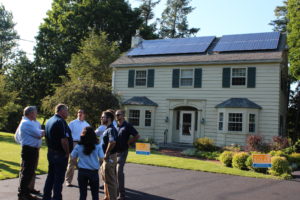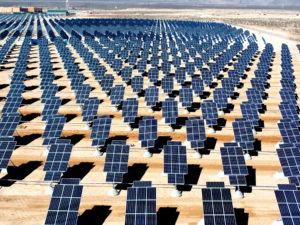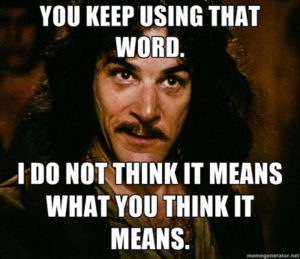 One of the things I regularly fantasize about is free money. This puts me in line – at least in this small way – with the rest of humanity.
One of the things I regularly fantasize about is free money. This puts me in line – at least in this small way – with the rest of humanity.
Alongside my free money fantasy, I also have a fantasy of producing surplus solar power that would plug into the smart electricity grid, allowing me to sit back, get paid for my home power-plant, while simultaneously recharging my homemade Ironman jet-pack suit. A boy can dream, right?
The traditional financial model of installing home solar panels – like I plan at my house – is that the homeowner pays money upfront to install solar panels on a roof, collects generous subsidies from local utility companies and the Feds, and then hopes that monthly energy-bill savings over the next two decades justify the original out-of-pocket expenditure.
As I mentioned, I think it will take me a about a decade to make my initial investment back, and to eventually earn the equivalent of an estimated 6.3 percent on my investment over the 25 year life of my panels.
But not everyone can reap that benefit. The limiting factor here is that not everyone has money to spend today, in the hopes of making it back over the coming decades. The point of the Solar Host is to provide all the upfront money for a homeowner who does not really “own” the roof panels, but rather serves as a ‘host’ for energy-producing panels.
Problems
Here are a few of the problems with existing solar programs in a nutshell:
- Upfront costs limit the program to wealthier households and businesses. We are not all Tony Stark.
- A limited amount of subsidy dollars at a utility can run out, after being taken up by those same wealthier households.
- Households choosing to purchase their own panels may have sub-optimal roofs, in terms of shading, angles, and direction, but they collect the same level of subsidy from their local utility and the Feds. Which kind of wastes the subsidy.
- Owning one’s roof panels means future maintenance costs are the responsibility of the owner, whereas ‘hosts’ do not bear those costs.
Enter Solar Host SA
In return for hosting – and zero upfront money – the homeowner or business owner gets a monthly rebate on future energy bills for 20 years at a fixed price.
The Financial Gains
The Solar Host program promises to reimburse solar panel hosts 3 cents per kilowatt hour, which – translation – means that a typical household panel array could produce $20 in savings per month on an energy bill.
Businesses – selected for their larger roofs and higher energy production – might expect to achieve savings on their bill of a few hundred dollars per month.

None of this is going make any rooftop host Tony Stark level-wealthy but hey – free money is still free money.
Capacity Limits
One of the recurring problems of free money, however, is that the line for it can be long.
Because Solar Host is a pilot with local utility CPS Energy, the program caps out at about 450 households and business. Currently, Solar Host SA is not accepting new applications for the program.
The program selects for the most advantageous roofs – South-facing, the best angles, no shading – that will produce the most power over the next two decades. When completed, the rooftop arrays will act like a distributed solar power plant. Local utility CPS Energy has already agreed to pay a fixed price per unit for the energy this distributed power plant will produce.
Private financing
One of my ongoing pet peeves about the solar industry – previously expressed – is that it wouldn’t exist in a market system. Take away all the subsidies and the industry collapses to a niche. It’s ‘renewable’ in terms of energy production, but not ‘sustainable’ in a market economy.
Within that context, the following may matter more to me than anyone else, but I was pleased to learn these sort of elegant financing facts about Solar Host SA.
First, homeowners and businesses, as previously stated, do not pay upfront to host.
Even more interestingly, CPS Energy also doesn’t pay up-front money. They simply agree to buy solar-produced energy over the next 20 years.
Thirdly, the capital providers aren’t ‘green’ in any particular way except the green of money. Private investment finances the purchase and installation of rooftop panels. Private capital then finances the long-term running of the hosted panels and the ‘distributed solar plant.’
The only big subsidy employed here comes from the Federal government, in the same form of a tax break that all renewable-energy investment generates.
Not Just Money
People tell me that non-monetary considerations come into play with solar panels (really, there’s more to life than money?), so I should acknowledge that participants in Solar Host SA could also enjoy the happy feeling of contributing to the planetary movement toward renewable energy. That’s not exactly the same as recharging my Ironman jet-pack suit, but I understand different people have different priorities.
A version of this appeared in the San Antonio Express News.
Please see related post
Solar Subsidies – Like “Turtles All The Way Down”
Post read (172) times.


